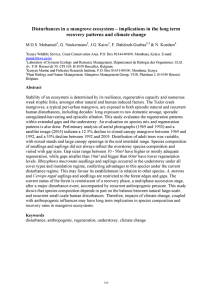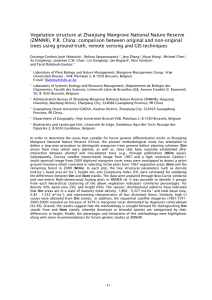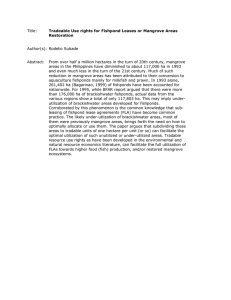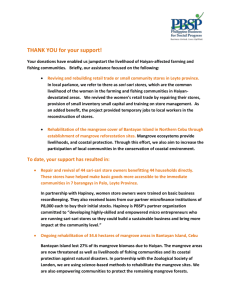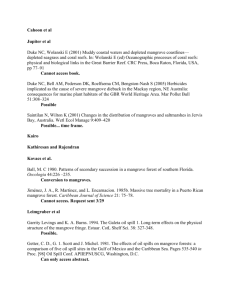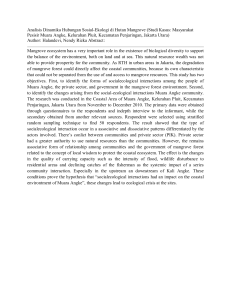Tervuren, Belgium, May 26-29, 2015
advertisement
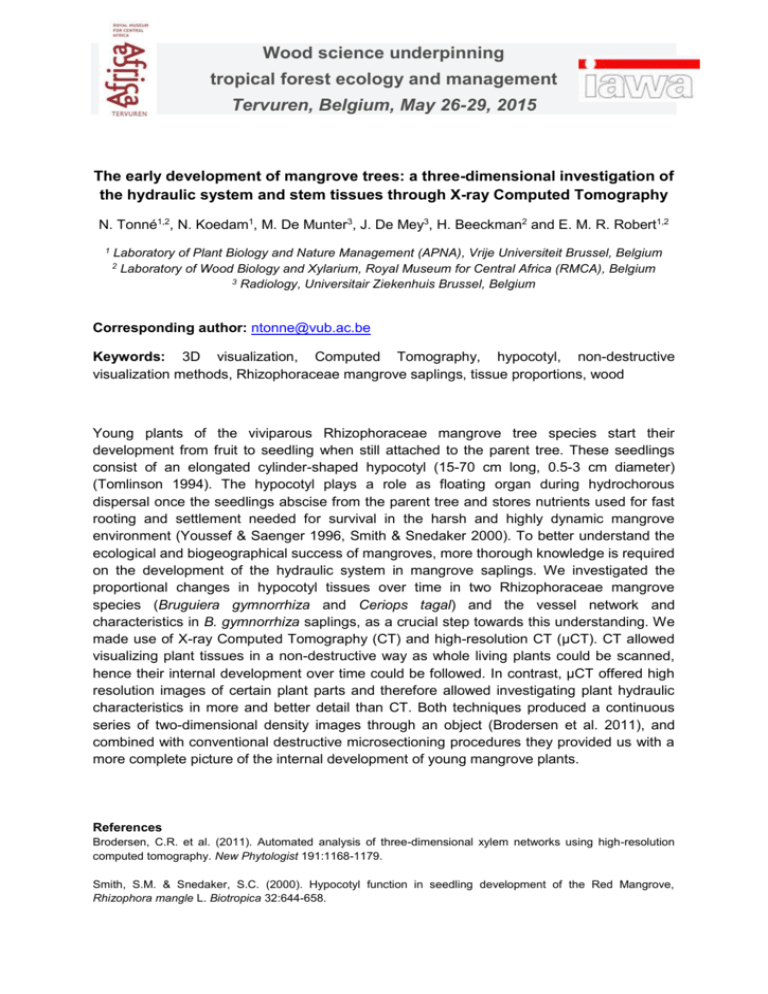
Wood science underpinning tropical forest ecology and management Tervuren, Belgium, May 26-29, 2015 The early development of mangrove trees: a three-dimensional investigation of the hydraulic system and stem tissues through X-ray Computed Tomography N. Tonné1,2, N. Koedam1, M. De Munter3, J. De Mey3, H. Beeckman2 and E. M. R. Robert1,2 1 Laboratory of Plant Biology and Nature Management (APNA), Vrije Universiteit Brussel, Belgium Laboratory of Wood Biology and Xylarium, Royal Museum for Central Africa (RMCA), Belgium 3 Radiology, Universitair Ziekenhuis Brussel, Belgium 2 Corresponding author: ntonne@vub.ac.be Keywords: 3D visualization, Computed Tomography, hypocotyl, non-destructive visualization methods, Rhizophoraceae mangrove saplings, tissue proportions, wood Young plants of the viviparous Rhizophoraceae mangrove tree species start their development from fruit to seedling when still attached to the parent tree. These seedlings consist of an elongated cylinder-shaped hypocotyl (15-70 cm long, 0.5-3 cm diameter) (Tomlinson 1994). The hypocotyl plays a role as floating organ during hydrochorous dispersal once the seedlings abscise from the parent tree and stores nutrients used for fast rooting and settlement needed for survival in the harsh and highly dynamic mangrove environment (Youssef & Saenger 1996, Smith & Snedaker 2000). To better understand the ecological and biogeographical success of mangroves, more thorough knowledge is required on the development of the hydraulic system in mangrove saplings. We investigated the proportional changes in hypocotyl tissues over time in two Rhizophoraceae mangrove species (Bruguiera gymnorrhiza and Ceriops tagal) and the vessel network and characteristics in B. gymnorrhiza saplings, as a crucial step towards this understanding. We made use of X-ray Computed Tomography (CT) and high-resolution CT (µCT). CT allowed visualizing plant tissues in a non-destructive way as whole living plants could be scanned, hence their internal development over time could be followed. In contrast, µCT offered high resolution images of certain plant parts and therefore allowed investigating plant hydraulic characteristics in more and better detail than CT. Both techniques produced a continuous series of two-dimensional density images through an object (Brodersen et al. 2011), and combined with conventional destructive microsectioning procedures they provided us with a more complete picture of the internal development of young mangrove plants. References Brodersen, C.R. et al. (2011). Automated analysis of three-dimensional xylem networks using high-resolution computed tomography. New Phytologist 191:1168-1179. Smith, S.M. & Snedaker, S.C. (2000). Hypocotyl function in seedling development of the Red Mangrove, Rhizophora mangle L. Biotropica 32:644-658. Wood science underpinning tropical forest ecology and management Tervuren, Belgium, May 26-29, 2015 Tomlinson, P.B. (1994). The Botany of Mangroves. Cambridge University Press, UK, USA and Australia. Youssef, T. & Saenger, P. (1996). Anatomical adaptive strategies to flooding and rhizosphere oxidation in mangrove seedlings. Australian Journal of Botany 44:297-313.
